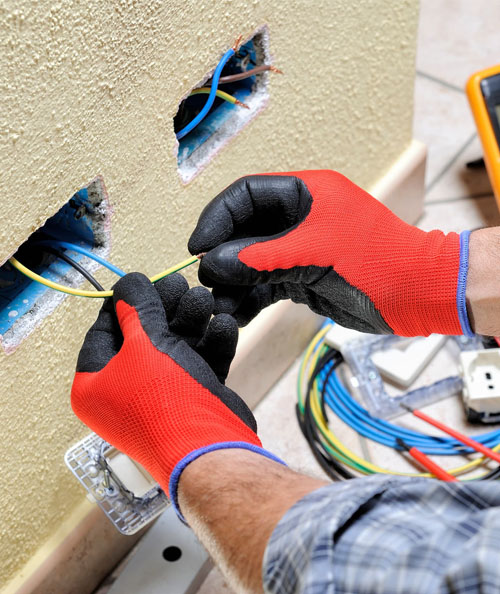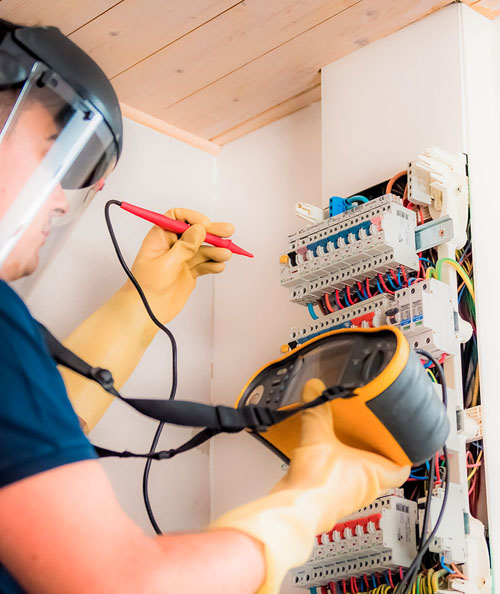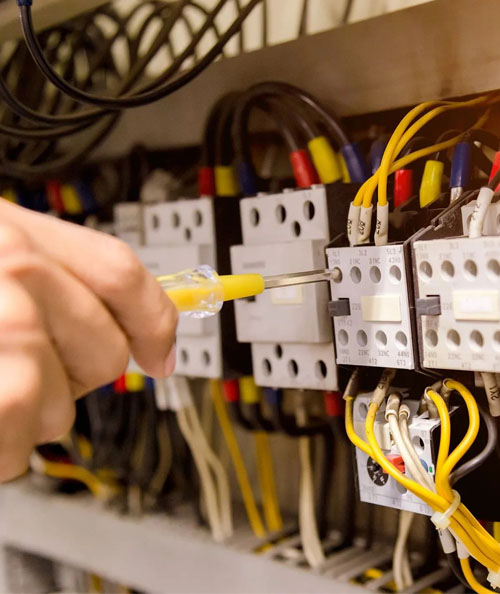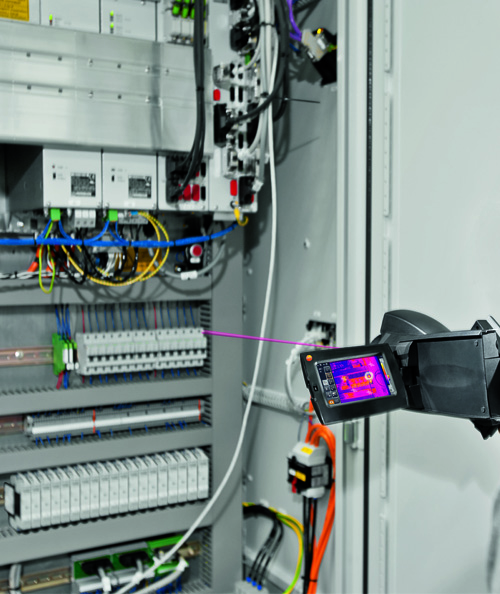Electrical Installation Condition Report
WHAT IS EICR?
EICR stands for Electrical Installation Condition Report. It is a formal document produced after an inspection and testing of the electrical installations in a property. The purpose of an EICR is to assess the safety and condition of the electrical installations and identify any defects, damage, wear and tear, or non-compliances with electrical safety standards. The report will provide recommendations for any necessary repairs, improvements or upgrades required to ensure the safety of the electrical installations in the property. EICRs are usually carried out by qualified electricians or electrical contractors.
WHAT DOES EICR MEAN?
An Electrical Installation Condition Report (EICR) is a document that assesses the safety and condition of the electrical installations in a property.
The purpose of an Electrical Installation Condition Report (EICR) is to evaluate the state of the electrical installations in a building and identify any defects or non-compliances with electrical safety standards.
An EICR (Electrical Installation Condition Report) is a formal document produced by a qualified electrician that provides information on the condition of a property’s electrical installations.
In the field of electrical safety, an Electrical Installation Condition Report (EICR) refers to a report that documents the condition of a building’s electrical installations.
What are the legal requirements for EICRs in rental properties owned by landlords? Could you explain the legislation that pertains to landlords and EICRs? What are the regulations regarding landlords and EICRs?
In England, under the Electrical Safety Standards in the Private Rented Sector (England) Regulations 2020, private landlords are legally required to have an Electrical Installation Condition Report (EICR) conducted at least every five years for all electrical installations in their rental properties. The EICR must be carried out by a qualified and competent electrician who will produce the report, which will detail the condition of the electrical installations and any necessary repairs or improvements required to ensure the safety of the installation.
The regulations came into force on June 1, 2020 and apply to all new tenancies from that date and to all existing tenancies from April 1, 2021. Landlords who fail to comply with these regulations can face financial penalties of up to £30,000. It is important to note that the regulations only apply to properties in England and not in Scotland, Wales, or Northern Ireland.

Get your electrical safety report before it's too late
What is the proper way for landlords to record an Electrical Installation Condition Report (EICR) for their property? How should landlords document the results of an EICR inspection of their rental property?
Landlords should ensure that they receive a copy of the Electrical Installation Condition Report (EICR) from the qualified electrician who carried out the inspection and testing of their property’s electrical installations. This report should document the findings of the inspection and identify any defects or areas of non-compliance with electrical safety standards.
The EICR report should be kept safely and made readily available to any tenant, prospective tenant, or local authority officer upon request. Landlords are required to provide a copy of the EICR report to the tenant(s) within 28 days of the inspection, and to new tenants before they move in.
If the EICR report identifies any areas of non-compliance or defects, the landlord should arrange for the necessary repairs or improvements to be made to the electrical installations as soon as possible, and keep a record of the work that was carried out. This information can be useful in case of any future inspections or in the event of any legal disputes.

Get your electrical safety report before it's too late
What is the process that an electrician follows to conduct an EICR, and what can landlords anticipate from the results? How do electricians typically perform an EICR, and what information should landlords expect to receive in the report?
Here are the typical steps involved in carrying out an Electrical Installation Condition Report (EICR) by an electrician and what a landlord should expect from the outcome:
Visual inspection: The electrician will carry out a visual inspection of the electrical installations in the property to assess their general condition, adequacy, and compliance with safety standards.
Testing: The electrician will perform various tests on the electrical installations to ensure that they are working correctly and safely, such as earth fault loop impedance tests, insulation resistance tests, and polarity tests.

Identification of defects: If any defects, damage, or non-compliances with safety standards are identified during the inspection or testing, the electrician will document them in the EICR report.
Recommendations: Based on the results of the inspection and testing, the electrician will make recommendations for any necessary repairs, improvements, or upgrades required to ensure the safety of the electrical installations in the property.
After the EICR inspection, the landlord can expect to receive a formal report from the electrician that details the condition of the electrical installations, any defects or non-compliances found, and recommendations for any necessary repairs or improvements. The landlord should review the report carefully, arrange for any recommended repairs to be made as soon as possible, and keep a record of the work carried out. The landlord should also keep a copy of the EICR report safe and readily available for tenants, local authorities, or other relevant parties to access if necessary.
Get your electrical safety report before it's too late
What about new build properties or new installations?
If a property is newly built or has been completely rewired, it should have an Electrical Installation Certificate known as an EIC. Landlords can provide a copy of the EIC to tenants and, if requested, the local housing authority.
What happens if an EICR is unsatisfactory?
If my EICR report is unsatisfactory, what happens next? You need to carry out remedial work to get the issues in the report investigated and repaired. If you are a landlord, you must carry out any repairs identified within 28 days of the inspection.
Get your electrical safety report before it's too late
What if the landlord doesn't do the electrical repairs?
According to : UK Goverment Website
A remedial notice must be served where the local housing authority is satisfied on the balance of probabilities that a landlord has not complied with one or more of their duties under the Regulations. The notice must be served within 21 days of the decision that the landlord has not complied with their duties.
If a local housing authority has reasonable grounds to believe a landlord is in breach of one or more of the duties in the Regulations and the report indicates urgent remedial action is required, the local housing authority may, with the consent of the tenant or tenants, arrange for a qualified person to take the urgent remedial action and recover their costs.
Otherwise, they must serve a remedial notice requiring the landlord to take remedial action within 28 days. Should a landlord not comply with the notice the local housing authority may, with the tenant’s consent, arrange for any remedial action to be taken themselves.
Landlords have rights to make written representation and appeal against remedial action. The local housing authority can recover the costs of taking the action from the landlord and may also impose a financial penalty of up to £30,000 on landlords who are in breach of their duties.

Get your electrical safety report before it's too late
What happens if a tenant refuses access?
Regrettably, these types of situations occur frequently, and with the need for self-isolation during the coronavirus pandemic, it could become an even more common problem. As a landlord, it’s important to demonstrate that you have taken all necessary measures to comply with the latest safety regulations. This may involve keeping a record of all communication with the tenant (such as emails or letters), as well as retaining a copy of any prior electrical inspection reports that indicate the property was in good condition during the most recent assessment.
What is the typical cost for a landlord to obtain an electrical safety certificate? How much should a landlord anticipate paying for an electrical safety certificate? In terms of cost, what should landlords expect when seeking an electrical safety certificate? How much does an electrical certificate cost UK?
By acquiring an Electrical Installation Condition Report (EICR) Certificate, you can ensure that your property is compliant with electrical safety regulations. Generally, the cost of the certificate falls between £125 and £300, and this does not account for any potential charges for electricians or remedial work.
Clear pricing rates outlined in a transparent policy.
Frequently Asked Question
If you are a landlord of a rental property or HMO in England or Scotland, you must acquire an EICR every five years or at the time of a change in tenancy. This legislation will be implemented in Wales in December 2022.
Although not a legal requirement for property sales, an Electrical Installation Condition Report (EICR) can be advantageous in reassuring the buyer about the safety of the electrical systems in the property.
Landlords are required to acquire a report from the inspector who performs the examination and testing. Typically, this report is an Electrical Installation Condition Report (EICR), which details the outcomes of the inspection and identifies any needed investigative or remedial work.
When a property has an unsatisfactory EICR, can tenants still move in? If the property is unoccupied, all of the problems that are discovered must be corrected before tenants move in. This is because the issues detected by an unsatisfactory electrical certificate may jeopardize the tenants’ safety if they are not resolved.
Customers frequently inquire about the distinctions between these concepts, but the answer is straightforward: they are all different terms for the same thing – an Electrical Installation Condition Report (EICR). An EICR is a comprehensive examination and inspection of your property conducted by a skilled and qualified electrician.
If there is a timeframe specified in a current, valid EICR, it must be followed when renewing the report. If no timeframe is specified, the EICR must be updated every five years. According to legislation, there are no grace periods, and there is no justification for failing to have an EICR in place after the date it is required.

